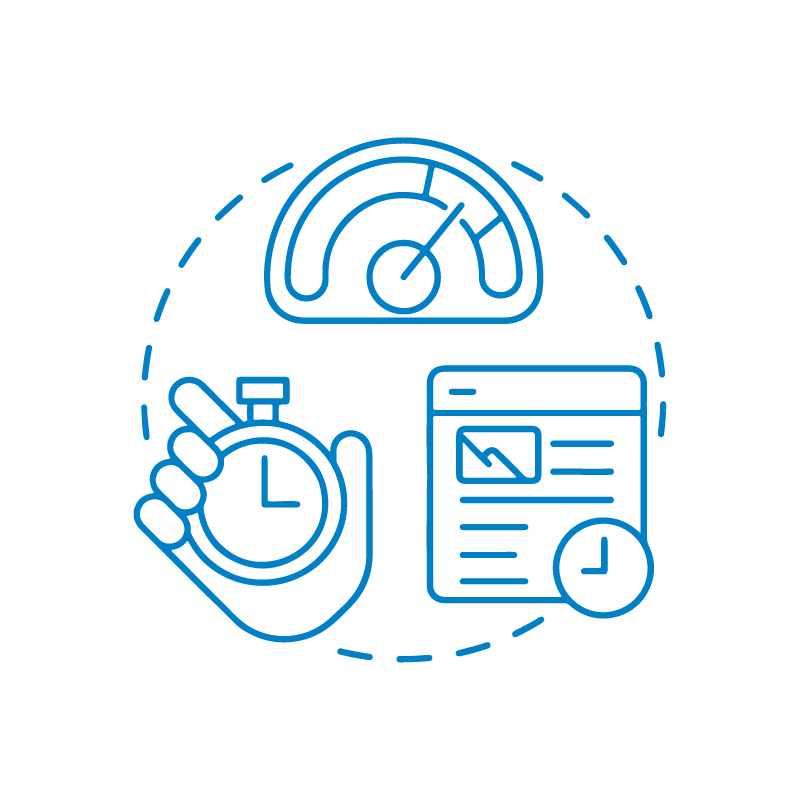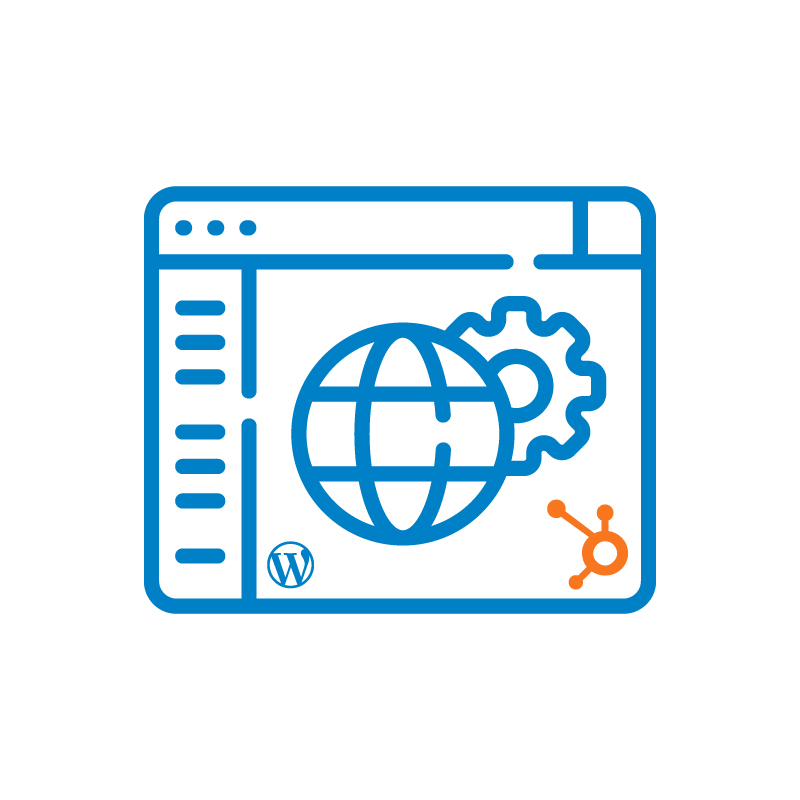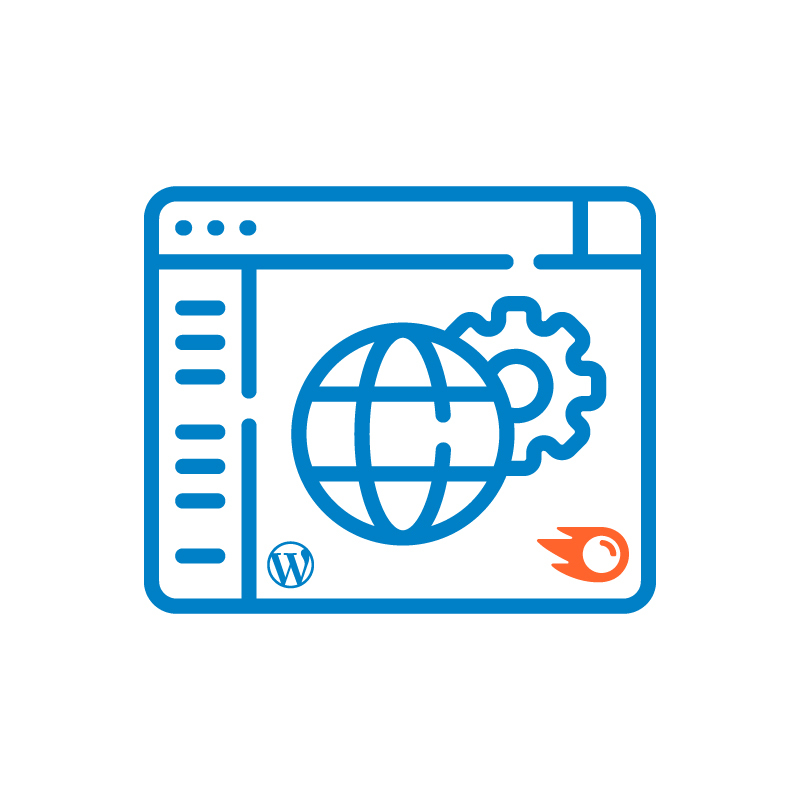Want to improve your WordPress site’s performance and SEO? This comprehensive guide on optimizing WordPress for Core Web Vitals is here to help. Core Web Vitals, including Largest Contentful Paint (LCP), First Input Delay (FID), and Cumulative Layout Shift (CLS), are key factors Google uses to measure user experience. In this comprehensive guide, you’ll find practical steps and tools to enhance these metrics, ensuring your site loads quickly, responds instantly, and stays visually stable.
Key Takeaways
- Core Web Vitals—LCP, FID, and CLS—are essential metrics influencing both user experience and site rankings on Google, making their optimization crucial for online success.
- Improving performance involves strategic steps such as choosing reliable hosting, using caching plugins, optimizing images, and minimizing JavaScript to enhance loading speed and interactivity.
- Regular performance audits, continuous content optimization, and leveraging expert assistance can sustain long-term improvements and ensure your WordPress site consistently meets Core Web Vitals standards.
Optimizing WordPress for Core Web Vitals: A Comprehensive Guide to Boosting Performance

Core Web Vitals are a set of specific factors that Google considers important in a webpage’s overall user experience. The metrics include Largest Contentful Paint (LCP) and First Input Delay (FID). Additionally, they include the Cumulative Layout Shift (CLS). Each of these metrics measures a different aspect of user experience, such as loading speed, interactivity, and visual stability.
Why are these metrics so important? Google has integrated Core Web Vitals into its ranking algorithm, meaning that a better Core Web Vitals score can significantly improve your site’s search engine visibility. This isn’t just about appeasing search engines; it’s about providing your users with a fast, smooth, and enjoyable experience. Focusing on these metrics enhances both SEO rankings and user satisfaction.
Optimizing Core Web Vitals for a WordPress site involves several steps, from choosing a reliable hosting provider like SiteGround, to utilizing caching plugins such as WP Rocket, and implementing various performance optimization techniques for WordPress sites. These steps are essential not only for improving your wordpress core web vitals scores but also for ensuring a robust and responsive website.
Introduction
Core Web Vitals are more than just a set of metrics; they are critical for enhancing both user experience and rankings in search engine results. Addressing Core Web Vitals significantly improves website performance and user satisfaction. This can lead to reduced bounce rates, improved user engagement, and higher conversion rates.
Think about it: when users visit a web page, they expect it to load quickly, respond to their interactions swiftly, and remain visually stable throughout their visit. Good performance metrics contribute to improved user retention rates. They also enhance overall satisfaction. On the flip side, poor performance metrics can lead to lost conversions and unhappy customers.
Optimizing Core Web Vitals can result in improved organic traffic and increased conversions for businesses. Tools like Google Search Console can help you monitor and assess your Core Web Vitals performance, allowing you to make the necessary technical adjustments and content optimizations to optimize core web vitals, ensuring your website meets Google’s core web vitals criteria for a high-quality user experience.
Understanding Core Web Vitals Metrics

Core Web Vitals metrics consist of three key components. These are Largest Contentful Paint (LCP), First Input Delay (FID), and Cumulative Layout Shift (CLS). These metrics are essential for enhancing user experience and are used as ranking factors by Google.
Optimizing WordPress performance involves selecting reliable hosting providers and ensuring server optimization for WordPress. Improving website content and design directly impacts loading speed, visual stability, and interactivity. Implementing caching and optimizing images can significantly enhance Core Web Vitals.
Largest Contentful Paint (LCP)
Before: Regular exercise has numerous benefits and can greatly improve overall health. Physical activity can help maintain a healthy weight, reduce the risk of chronic diseases, improve mental health, and enhance quality of life. Additionally, exercise can boost energy levels, improve sleep quality, and increase longevity.
After: Regular exercise has numerous benefits and can greatly improve your overall health. Here are some key advantages:
- Maintain a healthy weight
- Reduce the risk of chronic diseases
- Improve mental health
- Enhance your quality of life
- Boost your energy levels
- Improve sleep quality
- Increase your longevity
Achieving a good LCP score, defined as 2.5 seconds or less, significantly enhances user satisfaction. A high LCP score indicates slow-loading pages, potential user frustration, and high bounce rates.
First Input Delay (FID)
First Input Delay (FID) measures the speed of user interactions with content, assessing how quickly a webpage responds to user interactions. FID is a critical indicator of interactivity, reflecting how efficiently a webpage can handle user actions.
A good FID score is any measurement below 100 milliseconds, indicating a responsive website that provides a smooth user experience.
Cumulative Layout Shift (CLS)
Cumulative Layout Shift (CLS) measures a webpage’s visual stability by tracking layout shifts that occur during loading. A stable layout prevents unexpected shifts that can disrupt user interactions and lead to a frustrating browsing experience. A good CLS score is considered to be below 0.1, indicating minimal layout shifts.
Maintaining a CLS score of less than 0.1 ensures visual stability and enhances user experience.
Measuring Core Web Vitals on Your WordPress Site
Measuring Core Web Vitals is essential for identifying areas for improvement and optimizing website performance. Core Web Vitals metrics offer a scoring system that reflects the quality of a website’s user experience.
Tools like Google Search Console, PageSpeed Insights, and the Web Vitals Chrome Extension are reliable for monitoring Core Web Vitals. Running performance tests provides valuable insights into your website’s performance and helps identify areas for improvement.
Using Google Search Console
Google Search Console is an essential tool that provides insights into your website’s performance in terms of Core Web Vitals. Navigate to the Google Search Console dashboard to access the detailed Core Web Vitals report.
The Core Web Vitals report offers insights into the performance of key metrics, allowing you to identify areas for improvement related to three core web vitals.
Leveraging PageSpeed Insights
PageSpeed Insights is a straightforward tool for testing your Google Core Web Vitals score. It is user-friendly and provides valuable insights. The tool provides a speed report for mobile and desktop, displaying FCP, LCP, CLS, and FID scores. Use the ‘Origin’ tab in PageSpeed Insights to check the Core Web Vitals score for all pages from your domain.
You can also identify long tasks in website code by using Chrome Developer Tools.
Utilizing Web Vitals Chrome Extension
Install the Web Vitals Chrome Extension through the Chrome Web Store to begin measuring Core Web Vitals. The extension provides real-time scores for Core Web Vitals on any page directly within the browser, enabling immediate performance monitoring.
Integrating Web Vitals with Google Analytics is optional but can provide additional insights.
Optimizing Largest Contentful Paint (LCP)

To improve user experience and search rankings, it is recommended to aim for an LCP of 2.5 seconds or less. To enhance website loading speed, render-blocking elements like JavaScript, CSS, and third-party tools should be minimized.
Caching, code minification, and using a Content Delivery Network (CDN) can significantly improve LCP.
Optimize Images
Large images have a considerable effect on the loading speed of web pages. Their size can slow down the overall performance. Image compression tools like TinyPNG or ShortPixel can effectively reduce the size of images. Using image optimization plugins can automate resizing, compression, and format conversion for better loading speeds.
Utilizing formats like JPEG for photos and PNG for graphics helps maintain quality while reducing file sizes. General techniques for optimizing images include using proper formats, compressing images, incorporating alt text, and implementing lazy loading.
Minimize Critical JavaScript
JavaScript can significantly affect loading performance by blocking rendering until it is executed. Heavy or poorly optimized JavaScript can lead to increased time-to-interactive, affecting user satisfaction. Minimize JavaScript execution time by reducing the number and size of scripts loaded on a page.
Deferring non-critical JavaScript until after the main content has loaded can help improve perceived performance.
Prioritize Critical Resources
GZIP compression decreases the size of files before sending to users’ browsers. Prioritizing critical resources such as images and CSS improves perceived load speed and user experience.
GZIP compression minimizes larger files, enabling quicker delivery of critical resources affecting above-the-fold content.
Enhancing First Input Delay (FID)
A low score for First Input Delay is often due to unoptimized JavaScript from themes and plugins. Minimizing critical JavaScript, deferring unused content, and implementing pre-rendering can optimize client-side rendering. Reviewing external JavaScript and CSS plugins helps to prevent rendering delays.
Deferring non-essential JavaScript until after the main content loads can significantly improve FID.
Reduce JavaScript Execution Time
Using the coverage report in Chrome Developer Tools can help identify large JavaScript files impacting performance. Deferring JavaScript can enhance FID by allowing it to load in a non-blocking manner. Minifying and deferring JavaScript can significantly lower execution times, aiding in faster interactions.
Using lighter themes and avoiding bloated plugins can contribute to reduced JavaScript execution times.
Use Browser Caching
Browser caching stores frequently accessed data in the user’s browser, allowing for faster page loads and reduced input delays on subsequent visits. In website optimization, caching stores copies of static files, which helps to improve loading speed.
Render-blocking resources, such as CSS and JavaScript, can harm FID scores. This is because they delay the moment when users can interact with the page.
Implement Lazy Loading
Lazy loading is a technique that defers the loading of non-critical resources until they are needed, which can significantly improve initial load times. Implementing lazy loading can enhance user experience by speeding up page load times, leading to lower bounce rates and higher user engagement.
Improving Cumulative Layout Shift (CLS)
Reduce advertisements to prevent CLS issues and stabilize the layout. Allocate space for dynamic content to avoid unexpected shifts once content is loaded. Specify width and height for images and ads to prevent layout shifts during loading.
Unstable layouts and unexpected content shifts lead to increased Cumulative Layout Shifts (CLS).
Set Size Attributes for Media
Specifying dimensions for images and videos helps the browser allocate space before they fully load, preventing layout shifts. Defining width and height for media elements helps maintain layout stability during loading.
Setting explicit width and height for media ensures proper rendering and layout stability.
Avoid Inserting Content Above Existing Content
Using placeholders for dynamic content can prevent layout shifts during content loading. Layout shifts can negatively impact user experience by causing jarring movements on the page. Dynamic content insertion often leads to unexpected shifts in layout if not managed properly.
Maintaining a stable layout is crucial for improving Core Web Vitals and enhancing overall user satisfaction.
Optimize Fonts
Multiple styles and weights of fonts increase HTTP requests, which can slow down the site. Custom fonts can slow down the site and negatively impact LCP scores.
Font compression and serving fonts locally can significantly improve font loading times.
Advanced Optimization Techniques for Core Web Vitals
Preloading fonts prioritizes their loading, reducing the chance of layout shifts caused by slow font rendering. Loading fonts from a CDN can improve loading times and reduce layout shifts. Utilizing the ‘font-display’ property can prevent text from shifting during font loading.
Implementing a long-term strategy can help consistently improve Core Web Vitals scores over time.
Implementing a Content Delivery Network (CDN)
Using a Content Delivery Network (CDN) can enhance loading speeds by distributing static files across various servers worldwide. CDNs enhance website efficiency by distributing content globally, thus ensuring quicker load times for users from different geographical locations.
Using a CDN can help decrease loading times by caching content closer to users.
Using WP Rocket Plugin
WP Rocket allows for the deferral of JavaScript loading, which can lead to a smoother user experience and improved performance metrics. WP Rocket can improve site performance by reducing the loading time of JavaScript, which is crucial for optimizing user interactions.
WP Rocket provides built-in features to optimize website speed, including page caching and GZIP compression, which enhance Core Web Vitals scores.
Monitoring with Google Analytics
Setting up Google Analytics involves integrating it with your website, enabling the collection of data vital for performance monitoring. Google Analytics is crucial for tracking website performance metrics and understanding user behavior.
Once set up, Google Analytics allows you to monitor key performance indicators regularly and make data-informed decisions for ongoing improvements.
Mobile Optimization for Core Web Vitals

Mobile optimization is crucial as it directly addresses the growing number of users accessing the web through mobile devices. Adaptive image serving adjusts image sizes based on the visitor’s device, enhancing loading performance.
This section will guide you through responsive design, AMP, and mobile-friendly testing.
Responsive Design
A responsive design ensures that content adapts seamlessly to various screen sizes, which is crucial for maintaining user experience on mobile devices. Most WordPress themes are inherently mobile-friendly, reducing the need for extensive mobile optimization efforts for a WordPress website.
Regular testing of mobile pages is recommended to identify and resolve any potential layout or performance issues. Responsive design involves optimizing images and content so they load quickly and look appealing across all devices.
Accelerated Mobile Pages (AMP)
AMP significantly improves mobile loading times, leading to a better user experience. With AMP, mobile users are less likely to abandon your site due to slow loading speeds.
Implement AMP on your WordPress site by installing an AMP plugin and configuring the settings to enable AMP for posts or pages. Regularly review and test your AMP pages to ensure they are optimized for performance and adhere to AMP specifications.
Mobile-Friendly Testing
Google’s Mobile Usability Report is an essential tool for discovering issues related to mobile usability on websites. This report can help identify mobile usability issues by providing insights into problems users may face on mobile.
Mobile usability testing is crucial for ensuring that websites function well on mobile devices, enhancing user experience and engagement.
Long-Term Strategies for Sustained Core Web Vitals Success
An iterative approach with incremental improvements is necessary for sustained Core Web Vitals success. Continual monitoring and optimization are essential for maintaining high Core Web Vitals scores. Using advanced optimization techniques is essential for continuous improvement of Core Web Vitals.
Improving Core Web Vitals can enhance SEO rankings since they are integrated into Google’s ranking metrics.
Regular Performance Audits
Regular performance audits are crucial as they help maintain the overall health and speed of a WordPress site, ensuring better user experience. Conducting audits regularly allows website owners to stay ahead of potential issues and mitigate risks associated with declining performance.
Performance audits can uncover various issues like slow loading times, excessive JavaScript execution, and improper resource loading which contribute to a poor user experience.
Continuous Content Optimization
Continuous content optimization is essential for sustaining site performance as your site grows. Conducting regular assessments is crucial in maintaining optimized content as it allows for identifying areas of improvement.
Continuous optimization enhances overall site performance, ensuring that user experience remains a priority as content evolves.
Engaging Expert Assistance
Consider seeking professional help if you face complex optimization tasks beyond your expertise, experience significant performance issues, or lack the time for in-depth optimization. You can find experts through platforms like Upwork, LinkedIn, or specialized agencies that focus on WordPress performance and optimization.
Evaluate potential experts by reviewing their portfolios, reading client testimonials, and checking their track record in improving Core Web Vitals for other websites.
Summary
In summary, optimizing Core Web Vitals is crucial for enhancing user experience, improving SEO rankings, and achieving better website performance. By focusing on metrics like LCP, FID, and CLS, you can ensure a fast, responsive, and visually stable website. From choosing the right hosting provider and using caching plugins to optimizing images and JavaScript, there are numerous strategies to improve your Core Web Vitals scores.
Remember, this is an ongoing process that requires continuous monitoring and optimization. Regular performance audits, content optimization, and expert assistance when needed will help maintain and enhance your website’s performance over time. By prioritizing Core Web Vitals, you can create a website that not only ranks higher in search results but also provides an exceptional user experience.


